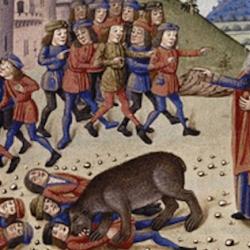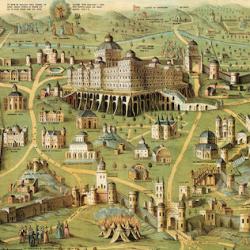1 Kings 7:46-47 inform us that the casting for the bronze furnishings and tools of the temple worship was done in the “plain of the Jordan between Succoth and Zarethan.” There are a few noteworthy details in these verses:
1) In verse 46 Solomon suddenly takes over as the craftsman of the story. The craftsman between vv 14-45 is Hiram (mentioned explicitly in v 40), but v 46 treats Solomon as the one doing the bronze work.
2) Succoth and Zarethan are in the transJordan between the Dead Sea and the Sea of Galilee. Doubtless, the casting was done here for practical reasons, but there is also an important symbolic import to the fact that Solomon cast the bronze tools and furnishings outside the land and then brought them in (similar things were done with the stone of the temple, 6:7). There is a “return from exile” motif here.
3) There is also a “creation” motif, in several respects. Yahweh made Adam outside the garden, and then brought him into the garden (Gen 2:7-8); so also Solomon makes bronze items outside the garden-land, and outside the area of the garden-house, and brings them in across the river. This association is hinted at by two verbal echoes of the creation account: Solomon casts the bronze items in the “clay” (doubtful word) of the ADAMAH, the ground, just as Adam was made from the ADAMAH. 1 Kings 7:47 says that Solomon “left all the utensils unweighed” (NASB), but the Heb at the beginning of the verse actually says “Solomon caused to rest all the instruments.” The text goes on to say that Solomon did not “spy out” or “search out” the instruments because of their great abundance, but the verse begins by talking about Solomon giving the instruments rest. There is another return from exile hint here; but the phrasing is identical to Gen 2:8b: in the garden “God caused to rest the man.” (Intriguingly, the verb in both passages is the hifil of the verb behind the name “Noah.”)
4) These allusions to the creation account might mean a number of things, but at least they mean that Solomon is a “creator” of a new Adamic people, symbolically represented by the instruments of the temple worship. But, more importantly, He is a type of the greater Solomon who forms people from dust and gives them rest in the land.















